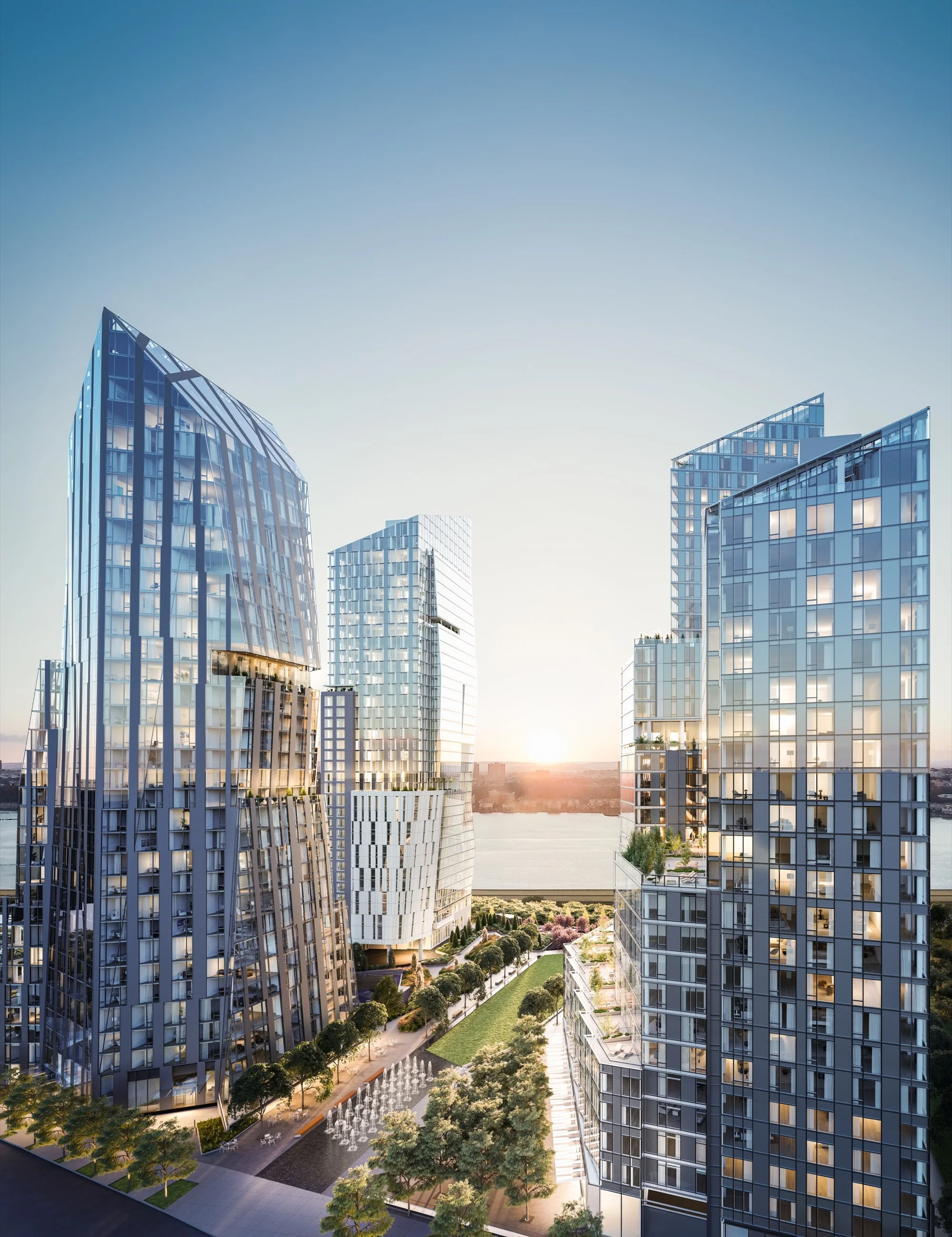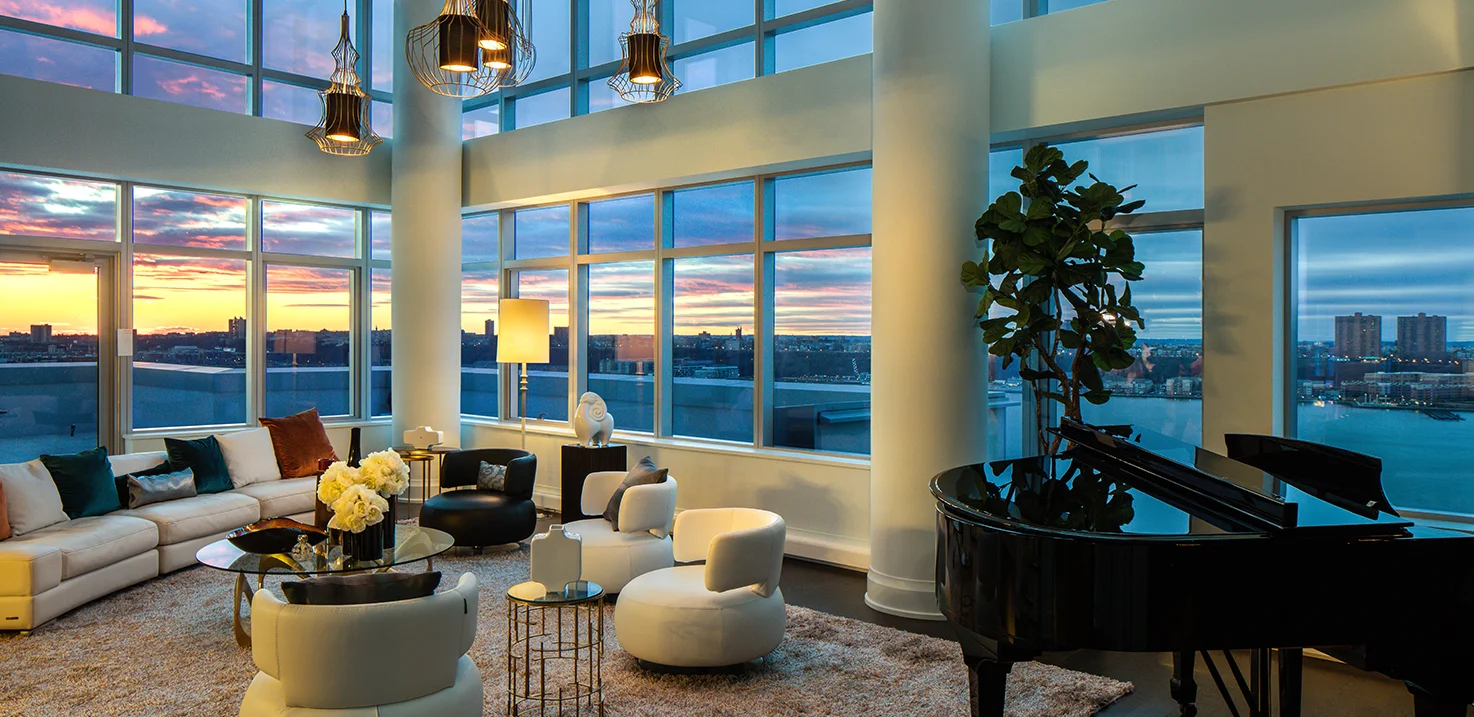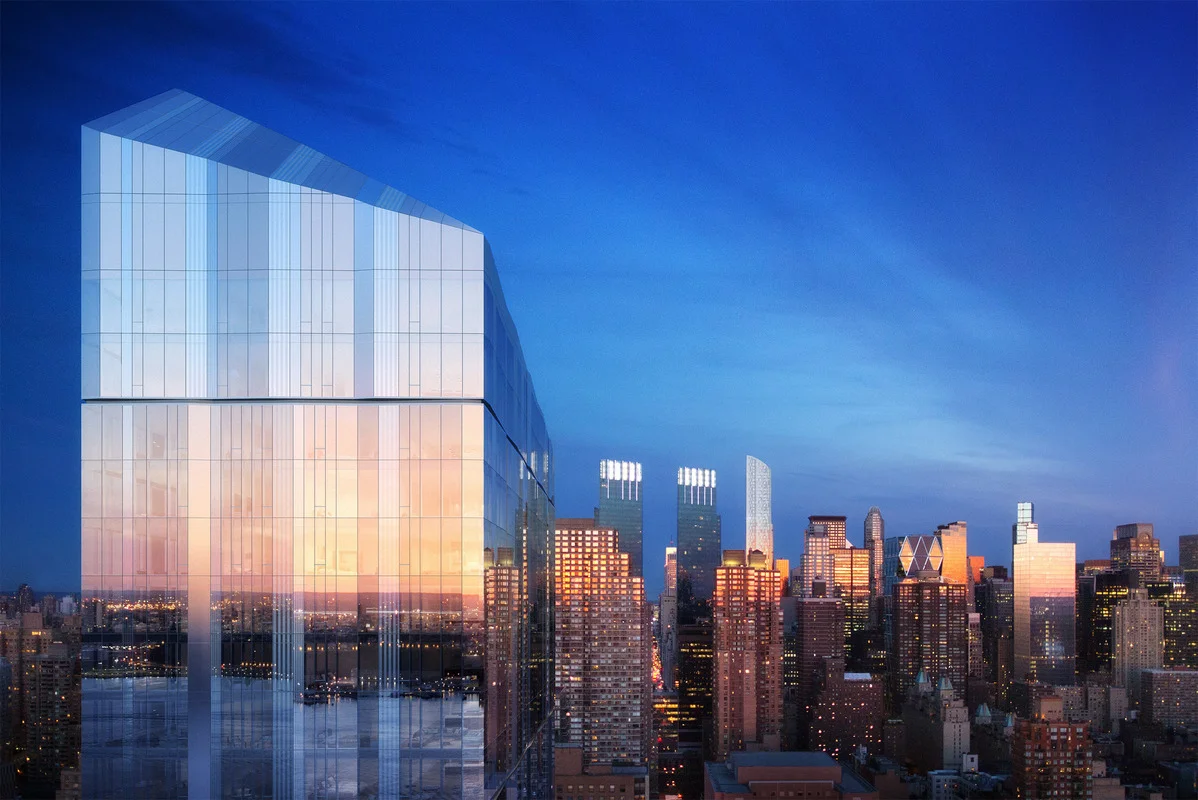Manhattan
Upper West Side
This neighborhood, north of 59th Street (Columbus Circle) and to the west of Central Park, is very popular among individuals that are seeking a comfortable and healthy environment. Traditionally considered the liberal and intellectual heart of Manhattan, the Upper West Side (UWS) remains home to some of the most prominent museums, music halls, and perhaps the most prestigious and definitely the oldest school in the city - the Trinity School. The close proximity to Central and Riverside Parks, the children-oriented attractions and many great schools make Upper West Side a very attractive option for families with children. The area also includes the Lincoln Center for the Performing Arts, the American Museum of Natural History, the Children’s Museum, and Symphony Space. Another famous landmark is Tom’s Restaurant, immediately recognizable from the sitcom “Seinfeld”. The Upper West Side is predominantly residential; hi-rises line the major thoroughfares, and low, 4-5 stories townhouses (old and new) are typically seen along the side streets. The prices are sky-high, but are still reasonable compared to comparable real estate in the Upper East Side.
Midtown Manhattan
Midtown is what non-New Yorkers usually think of when imagining New York City. Simply put, it is the busiest commercial district in the United States. Although this impression is accurate, Midtown also houses a large number of tenement buildings and modern high-rises. New residential developments are popping up all the time, and it has become a very convenient place to live.To the West of 8th Avenue lies Hell’s Kitchen, whose locals are resisting calls to refer to it as the more marketable Clinton.Its proximity to Broadway and its abundance of affordable housing make this area very popular among aspiring actors, students and young people in general. For a long time zoning laws protected the low-rise character of the buildings here and prevented development in the area. The laws changed in the 1970s, allowing the building of a number of modern condo high-rises, which are now intermixed with pre-war brick walk-ups and refurbished industrials lofts. The area has a strong mix of ethnic and small local restaurants - including Ethiopian, Afghan, Peruvian - centered around Ninth Avenue, on which the Ninth Avenue Association's International Food Festival has been performing since 1974.
On the opposite side of the island, along the East River, Midtown East (also known as Turtle Bay) is also largely residential. The neighborhood has everyone from old money to blue-collar workers, with the diversity in lodgings to match. It includes the upscale neighborhoods of Sutton Place and Beekman Place, as well as the more affordable Murray Hill. Midtown East is home to the United Nations headquarters and to St. Patrick’s Cathedral – the largest decorated neo-gothic cathedral in the United States.In between Midtown West and Midtown East lies the more centrally located Theatre District. This area is home to world-renowned theaters (on- and off-Broadway), Times Square, Rockefeller Center, Madison Square Garden, several museums along 53rd Street (including the Museum of Modern Art), shopping malls, and a number of architectural masterpieces such as the Empire State Building, the Chrysler building and Grand Central Terminal. The recent addition of the Time Warner Center at Columbus Circle reinforced the significance of this area as an entertainment destination for New York residents and visitors.
Upper East Side
Laying to the East of Central Park, the Upper East Side is generally considered the most expensive residential area in the country, and has more of a conservative business atmosphere than the Upper West Side. However, you might find that the rental rates here are actually lower than those in the more trendy downtown neighborhoods. This is mainly the result of the fact that subway transportation is less convenient here compared to the Upper West Side, causing prices and general living expenses to fall a bit as one moves east of Third Avenue. However, there is a main subway line that runs down Lexington Avenue that will take you from the most northern tip of the island to the most southern tip. The area is still known for being the “Silk Stocking District,” packed with the most elegant marble-faced townhouses built by wealthy magnates like the Astors and the Tiffanys in 1880-1900s. It offers the highest concentration of museums outside of Washington, D.C. It is here that you will find The Metropolitan Museum of Art, the Guggenheim Museum, and the Whitney Museum of American Art. In addition, it is also safe to say that if you are fond of fine dining or haute couture, the Upper East Side will satisfy even the most demanding tastes.
Financial District
Occupying the southern tip of the island of Manhattan roughly below City Park Hall, this area is the financial heart of New York City and, arguably, the world. It boasts several beautiful buildings and historical sites such as the New York Stock Exchange on Wall Street, Trinity Church, the Federal Reserve Bank, the Old Custom’s House, and many others. The area is historically non-residential, with only about 30,000 permanent residents; a population that explodes to 300,000 during the work day. Drawn by the unparalleled convenience, though, for those who work downtown, the Financial District has become more residential and some of the area’s hi-rises have been converted from office into residential space. As a result, many businesses have emerged to service the community, so that today there are many more drug stores, restaurants, dry cleaners, and delis than there used to be. For more sophisticated shopping and entertainment, you can go to the South Street Seaport, which is within walking distance from the Financial District and offers breathtaking views of the Hudson River, the Statue of Liberty and Ellis Island. Currently, the areas close to or especially facing Ground Zero are relatively inexpensive, but can be expected to rise in value once the area is rebuilt.
Chinatown & Little Italy
New York City’s Chinatown is the country’s most famous, containing the highest concentration of Chinese inhabitants in the western hemisphere – at least 150,000 Chinese residents in a roughly 2 mile-square area. Chinatown is also probably the most eclectic area of Manhattan. With its booming fish and fruit markets and colorful souvenir shops, Chinatown impresses visitors as an exotic and very lively marketplace. For residents, it offers an affordable lifestyle with cheap and ethnic eateries, inexpensive shopping and convenient transportation. Most buildings are turn-of-the-century residential walk-ups and cast-iron buildings, but there are also a few recently built and/or modernized apartment buildings with elevators and additional amenities. Over the recent years Chinatown has expanded and spilled over into other neighborhoods, and now borders on Delancey Street to the north, East Broadway to the east, Broadway to the west, and Chamber’s Street to the south. Little Italy, for instance, has essentially been taken over by Chinatown, and now remains only somewhat distinguished by its architecture and touristy restaurants but lacking its former atmosphere.
SOHO, TriBeca, Nolita
These neighborhoods, with their rich history as manufacturing and distribution hubs, have been utterly transformed into very attractive, trendy residential areas with unmatched charm and architecture – and the prices to match.
TriBeCa
TriBeCa (Triangle Below Canal) is the historical site of the Washington market, which used to be the major food product distribution hub. Misleadingly, the area is more trapezoidal than triangular in shape, and stretches from Broome to Barclay Street and from Broadway to the Hudson River. During the 1970s the area’s abandoned spaces were transformed by young artists and families, and these days it ranks among the nation’s most affluent neighborhoods. Gentrification is already complete in this area; bargain seekers need not apply. Those who can afford it will find former warehouses and store-and-loft buildings that have been transformed into modern offices and fantastic luxury condos. Another draw is the high quality of the schools: both the acclaimed elementary school PS 234 and the Stuyvesant High School, one of New York City's prized Specialized Science High Schools, lie in the area. Busy during the day and very quiet at night, the area boasts famous restaurants and nightclubs. Most of TriBeCa’s residents commute daily to either Midtown or the Financial District, which are both just a short ride away.
SoHo
SoHo (South of Houston) was a center for textile industry following the Civil War; its cast-iron warehouses housed textile and other light manufactured goods. By the mid-20th century the area lost its value to the industry and was only narrowly saved by preservationists from destruction to build an expressway. The neighborhood developed from these depressed industrial roots into its present affluent status through what is now even called the “SoHo effect”: young artists and families move into the huge lofts with large windows and low rents left by industry, creating an attractive and unique area that gradually gentrifies as its desirability grows. Nowadays, the cobble-stone streets, cozy cafes and trendy boutiques attract many tourists and shoppers, and buyers will be hard pressed to find anything under $1 million. 19th century cast-iron warehouses are being rebuilt into condo and co-op buildings and offer a luxury lifestyle in the heart of Manhattan. SoHo runs roughly from Houston Street in the north to Lafayette Street in the east, Canal Street in the south, and Varick Street on the west.
Nolita
Nolita (North of Little Italy) lies east of SoHo and north of Little Italy, and used to be the destination and the favored neighborhood of Italian immigrants. Nowadays, Nolita has lost most of its Italian atmosphere along with Little Italy itself, although it has retained a number of European restaurants and bakeries. The neighborhood is home to old-time residents as well as artists and young professionals, with a particularly large number of residents working in the film industry. Nolita has never quite become as trendy as SoHo or TriBeCa, but its residents enjoy the slightly lower rents and smaller crowds. The neighborhood certainly has its share of expensive restaurants and up-scale shops. Buildings here are a combination of SoHo-style cast-iron lofts and Lower East Side walk-up tenements.
Lower East Side & East Village
In the early 20th century this area saw a boom in tenement buildings construction to house New York’s millions of immigrants. In those days, this neighborhood was the most densely populated area in the world. Today, however, the Lower East Side is characterized by its young residents (under 30), abundant apartment houses (high-rises, walk-ups and occasional brownstones), a dynamic social scene and a hip lifestyle. The neighborhood’s immigrant character, both past and present, has created a deliciously varied culinary scene. Famous eateries include Katz’s Deli, a testament to the area’s previously strong Jewish character. Above Houston Street lies the East Village. Once just considered the Lower East Side’s northwest corner, the neighborhood gentrified with the usual settlers of musicians and artists more quickly above Houston Street than below, and a unique neighborhood was born. The area is not just trendy but boasts an inviting neighborhood atmosphere. A large part of the East Village is called “Alphabet city,” with avenue names running from A to D. Tompkins Square Park is at the heart of it, and it is the venue for the Charlie Parker Jazz Festival (the famous Avenue B residence) and a popular recreation spot for local residents, students and tourists alike. Many of the clubs in the area formed the launching platform for groups such as the Strokes, the Beastie Boys, and the Ramones. Those looking for true artistic bohemia, though, might be disappointed by the area’s gentrification and should consider looking to Brooklyn.
Greenwich Village, West Village
Once the center of Bohemian culture and home to all sorts of artists and political movements, Greenwich Village still exudes an air of creative and intellectual freedom despite its high rents. The Village, as it is often simply referred to, is filled with sense of community and pride for the historic significance of every building and street. It has a unique feel, drawing from its history as a separate village from the rest of the New York settlement, which is mostly easy to find in its unique non-grid street layouts. Perhaps best known for being the home of New York University and Washington Square Park, the area is also home to the historic Jefferson Market Library, Christopher Street, Stonewall Inn, Winston Churchill Square, as well as numerous sites popular for their affiliation with celebrities, books and movies. Living in the Village will enable you to enjoy the serenity of narrow streets, elegant little squares and gardens, and turn-of-the-century townhouses and brick walk-ups. Unique architecture and the virtual absence of chain stores create an illusion that you are in a different city; however, a short stroll will bring you to either to the shopping Mecca of SoHo, to the galleries of Chelsea, the trendy clubs and restaurants of the Meatpacking district, or to the busy thoroughfares of Midtown. Greenwich Village is bounded by Broadway on the east, the Hudson River on the west, Houston Street on the south, and 14th Street on the north, with Sixth Avenue demarking the approximate begin of West Village.
Chelsea
Occupying a large area to the West of the Sixth Avenue between the 14th and 34th Streets, Chelsea is a melting pot of ethnicities and cultures and one of the most desirable residential areas in the city. The area is famous for its acceptance of the gay-community, and has recently been attracting a large number of professionals, despite the so-so quality of the schools. The neighborhood is primarily residential, with a mix of refurbished commercial warehouses and apartment buildings ranging from elegant townhouses to modern high-rises and lofts. The architecture is mostly urban, and the atmosphere is highly sophisticated due to the bustling arts scene, fine dining and clothing boutiques. Together with The Meatpacking District this area is home to numerous art galleries, which sometimes line entire streets. The Meatpacking District has undergone a major transformation since 1990, becoming the most glamorous scene for fashion and nightlife with some of New York’s hottest clubs. The fact that these posh attractions are situated against a still-active meatpacking industry only adds to the area’s gritty hipness.
Gramercy Square, Union Square & the Flatiron District
The area encompasses 14th Street in the South and Madison Square Park in the North, and divides Lower Manhattan from Midtown.
Gramercy
Gramercy is a much desired neighborhood with a number of beautiful historic buildings mostly concentrated around the private Gramercy Park, to which only nearby residents receive a key. Its residents value the safe and quiet atmosphere of the area, the exclusivity of organizations like The Players’ Club, The Poetry Society of America and the National Arts Club, as well as the abundance of great restaurants and cultural attractions. The Player’s Club, for instance, was established in 1888 by the brother of President Lincoln's assassin, Edwin Booth, and on its member list once stood Mark Twain and Arthur Miller. Most buildings here are single-family townhouses and brownstones; however, in recent years, there has been construction of new condo and coop high-rises that have made this highly desirable residential area more accessible for newcomers – but without that coveted golden key. Gramercy is roughly bound by 14th Street, Third Avenue, 23rd Street, and Park Avenue South.
Union Square
Union Square is home to the city’s busiest farmers’ market (Union Square Green market), offering a tremendous fruit and vegetable variety four days a week, and a place for artisans to sell their unique handcrafts, art, jewelry, etc. The square is a magnet for protests and public gatherings, from the 1861 protest of the fall of Fort Sumter to public mourning after 9/11. The area is a balanced mix of commercial and residential buildings and a popular destination for those seeking trendy bars and restaurants.
Flatiron District
The Flatiron District, named after the renowned triangular Flatiron building (at one time the tallest structure in the word), occupies a sort of no-man’s-land between the true neighborhoods of Midtown and East Village. This unique situation has its benefits, as the area is in a centrally located and primarily commercial, but without some of the bustle of Midtown. There are also beautiful apartments located in the typical Flatiron buildings with huge windows and moldings on the building facades.













































